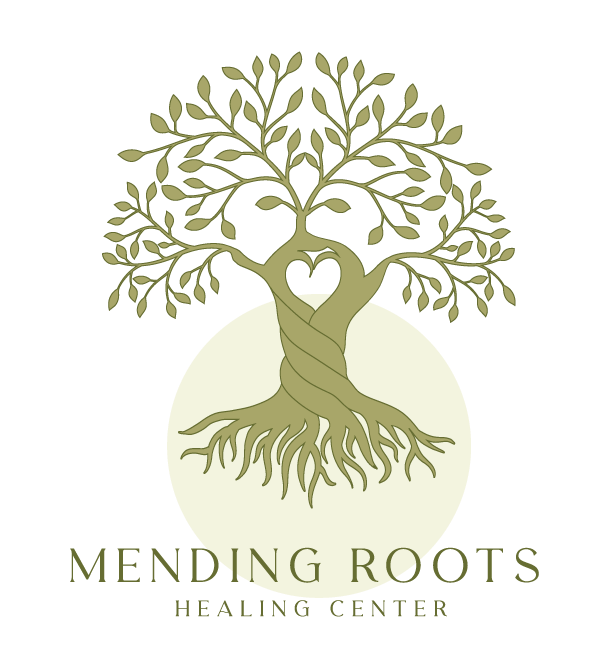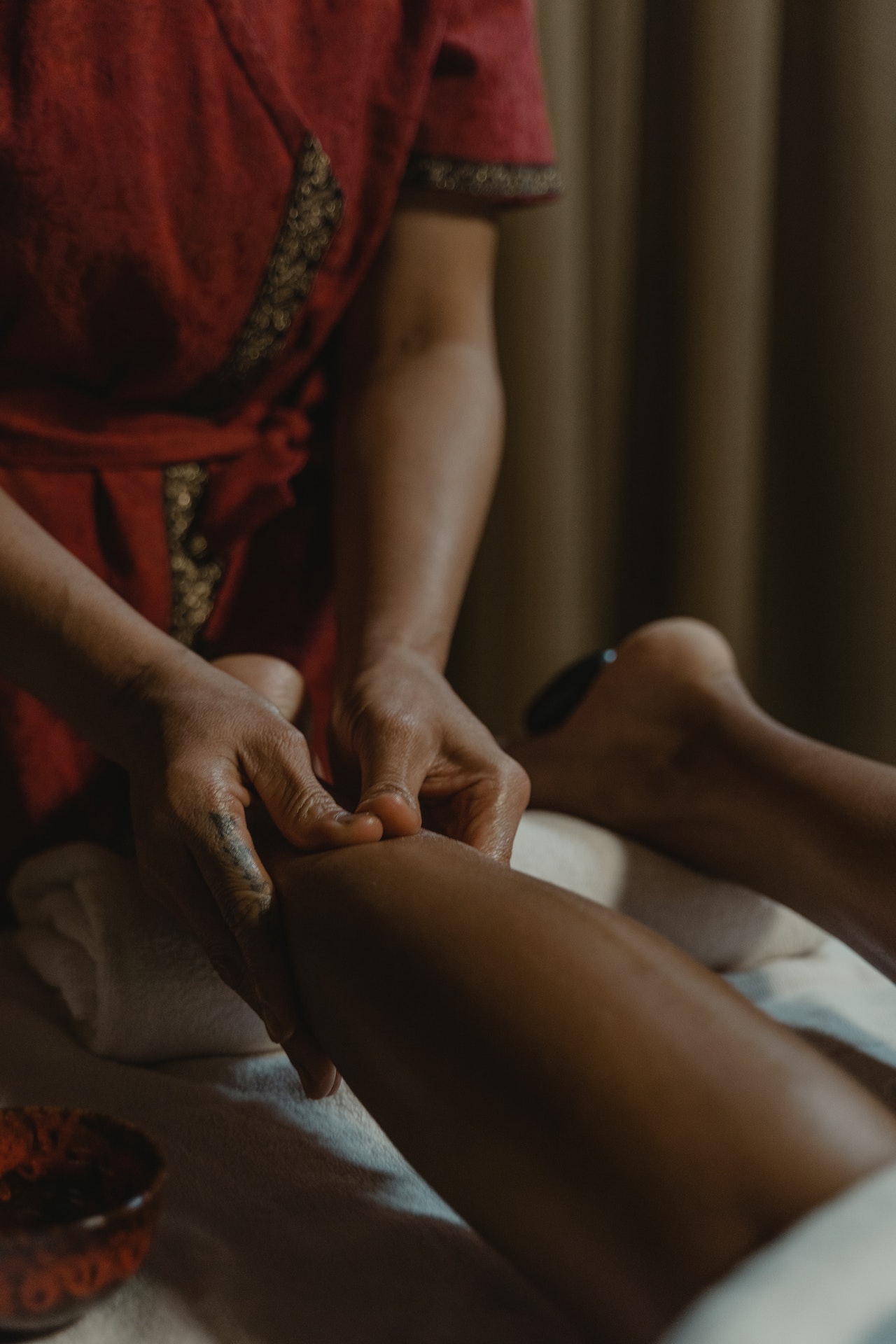Are you seeking a way to relieve stress, reduce pain, and improve your quality of life? Look no further – massage therapy and bodywork might be the answer you’ve been searching for. In this comprehensive guide, we will explore how massage and touch therapy can help support the body through emotional and physical transitions of life. Whether you are seeking relief from existing pain patterns or want general relaxation, this guide will provide you with all the information you need to make an informed decision about which approach is right for you.
Understanding Massage Therapy
Massage therapy is a widely recognized practice that focuses on releasing muscle tension and promoting relaxation. This technique has been used for centuries to improve physical and mental well-being. One of the most popular types of massage therapy is deep tissue massage, which involves applying various touch pressure techniques to target specific areas of tension, and by doing so, alleviating stress and anxiety, reducing pain, and promoting a sense of relaxation.
Massage therapy sessions usually last one to two hours, during which the therapist works on a mat or table to provide the necessary support and comfort. It is important to note that excessive touch pressure during massages could cause more tension rather than relaxation. Therefore, it is essential to communicate your comfort level with the therapist to ensure a pleasant experience.
Exploring the Benefits of Massage Therapy & Bodywork
Massage therapy offers numerous benefits beyond stress relief. Let’s take a look at some of the most notable benefits:
1. Reduces Anxiety and Stress
Massage therapy is known for its ability to reduce anxiety and stress levels. By releasing endorphins, the body’s natural feel-good hormones, massages can create a sense of euphoria and relaxation. Deep tissue massage, in particular, can be highly effective for individuals with high levels of chronic stress and anxiety.
2. Relieves Pain and Muscle Tension
Massage therapy can offer relief whether you’re experiencing chronic pain or muscle tension from physical exertion. By targeting specific areas of discomfort, therapists can alleviate pain and improve range of motion. Techniques such as therapeutic touch, reflexology, and deep tissue work can be particularly beneficial for pain relief.
3. Improves Blood Circulation
Massage therapy helps to improve blood circulation, which is essential for overall health and well-being. By stimulating the flow of blood and oxygen to the muscles and tissues, massages can enhance the body's natural healing process and promote better cardiovascular health.
4. Enhances Sleep Quality
Massage therapy may also be a solution if you struggle with insomnia or have difficulty falling asleep. The relaxation induced by massages can help calm the mind and body, promoting a restful night’s sleep.
5. Boosts Immune System
Regular massage therapy has been shown to boost the immune system by increasing the activity of natural killer cells, which are responsible for fighting off pathogens and foreign substances in the body. By improving immune function, massages can help prevent illness and promote overall well-being.
6. Restores Energy Flow
Bodywork techniques such as acupressure and pressure point therapy aim to restore the flow of energy throughout the body. Stimulating specific points can address blockages and imbalances, promoting a sense of balance and well- being.
7. Improves Posture and Alignment
Bodywork techniques often focus on improving the skeletal structure and alignment. By correcting imbalances and misalignments, bodywork can help improve posture and relieve chronic pain caused by poor alignment.
8. Enhances Mind-Body Connection
Bodywork techniques, particularly those rooted in Eastern practices, emphasize the connection between the mind and body. By promoting mindfulness and awareness, bodywork can help individuals deepen their understanding of their physical and emotional well-being.
9. Promotes Emotional Healing
Bodywork techniques, such as shiatsu or Thai massage, incorporate elements of stretching, joint mobilization, and assisted yoga-like movements. These techniques release physical tension and promote emotional healing and relaxation.
Massage Therapy at Mending Roots
Massage therapy encompasses a wide range of techniques, each with its unique benefits and applications. Depending on your needs, we offer an integrative and holistic approach that is trauma-informed and rooted in compassionate listening and intuitive touch. At Mending Roots, we offer therapeutic massage for all bodies, as well as prenatal and postpartum massage for birthing folks.
Therapeutic Massage
Therapeutic massage is a holistic, hands-on approach to improving an individual’s physical and mental well-being. It involves the manipulation of soft tissues in the body, such as muscles, tendons, ligaments, and connective tissues. There are numerous forms and techniques of touch therapy to help support the body’s physiology.
Swedish Massage
Swedish massage involves long, gliding strokes, kneading, and tapping to promote relaxation, improve circulation, and alleviate muscle tension. This practice tends to get integrated into deeper strokes such as myofascial release, trigger point therapy, and soft tissue mobilization, which allows for a more targeted or specific release into tightened or stagnant connective tissue.
Prenatal Massage
In our Western society, pregnancy and birth have become more medicalized. Prenatal care often looks like numerous scans, invasive testing, and clinical settings. For most people, this doesn’t necessarily equate to a stress-free experience. In traditional midwifery practices, pregnant people were often given extensive and regular massages as part of their pregnancy care, paying great attention to the abdomen, hips, and legs. Consistent massage allows the person to be more aware and relaxed in their pelvis, easing pain and stagnation and preparing the body for birth.
Massage is immensely beneficial in all stages of pregnancy, as it is a form of passive exercise that promotes circulation. Increased circulation oxygenates the pregnant person and the baby’s entire body and reduces sluggishness, nausea, fatigue, and depression. It promotes the release of nutrients stored or stagnant in the body while helping to relieve congestion of the blood that results in various aches and pains.
Postpartum Massage
Both physically and emotionally, postpartum is a time of considerable change. Energetically, the body starts from a relative weakness and depletion after birth. The body is recovering not from labor but from the whole journey of being pregnant. Our bodies do not just “bounce back.” From as soon as the first week of giving birth, bodywork can be an excellent tool to support the birthing parent’s rest and encourage them to stay in tune with their body.
Some benefits include promoting post-natal recovery, facilitating the restoration of pre-pregnancy physiology, extra care to abdominal and pelvic floor toning, relieving back and shoulder tension, and improving circulation and lymphatic flow.
Regardless of the birth outcome, the birthing person’s body is on a hormone roller coaster during these first few weeks. Estrogen and progesterone levels drop dramatically, which can contribute to the “baby blues.” Bodywork can support and regulate these intense feelings felt from your hormones. It can also create a sacred, relaxed environment to aid rest and ease fatigue.
Finally, postpartum bodywork can include both parent and baby. This is a glorious way to facilitate bonding and can also benefit parents who are breast/chestfeeding.
Understanding the Effects of Trauma on the Body
Trauma can profoundly affect the body’s nervous system and physiological responses. When a person experiences trauma, their sympathetic nervous system gets activated, triggering a cascade of physiological changes, including the release of stress hormones, increased heart rate, shallow breathing, and muscle tension. This heightened state of alertness is the body’s way of preparing for fight, flight, or freeze responses. However, for trauma survivors, this heightened state of arousal can become chronic and lead to ongoing physical symptoms such as muscle tension, disrupted sleep patterns, digestive issues, and increased heart rate.
Psychologist Peter Levine highlights that humans are unique in their inability to automatically activate the body’s natural “shake” mechanism, which helps release stored energy and restore the nervous system to a state of balance. As a result, trauma survivors can become stuck in a state of hypervigilance and high alertness. This incomplete physiological response to trauma can contribute to long-term physical and emotional challenges.
The Role of Therapeutic Touch in Healing
While there are various approaches to addressing the impact of trauma on the nervous system, therapeutic touch often gets overlooked. When approached with sensitivity and awareness, massage and bodywork can provide trauma survivors with a safe and supportive environment to reconnect with their bodies and begin healing. Touch is one of the most elementary tools we possess to restore our nervous systems, but it is hard to recover if we don’t feel comfortable in our skin.
Bessel Van Der Kolk expresses this sentiment beautifully in “The Body Keeps Score”: “Just like you can thirst for water, you can thirst for touch. It is a comfort to be met confidently, firmly, and gently. Mindful touch and movement grounds people and allows them to discover tensions that they may have held for so long that they are unaware of them. When you are touched you wake up the art of you that is being touched. People who are terrified need to get a sense of where their bodies are in space and of their boundaries. Firm and reassuring touch lets them know where those boundaries are: what is outside of them and where their bodies end. They discover that they don’t have to constantly have to wonder who and where they are. That their body is solid and that they don’t have to constantly be on guard. Touch lets them know that they are safe.”
1. Physiological Benefits of Massage
Massage and bodywork support the activation of the parasympathetic nervous system, which is responsible for the body’s relaxation response. By creating a safe and intentional space, massage therapy can help reduce stress, release muscle tension, promote deep breathing, improve circulation, and regulate digestion. These physiological effects contribute to an overall sense of calm and well-being.
2. Establishing Safe Touch
For trauma survivors, touch can be a sensitive and triggering subject. Massage therapists have a responsibility to prioritize their client’s comfort and safety. By establishing clear boundaries, obtaining informed consent, and actively listening to client’s needs and preferences, therapists can create a safe space where clients feel empowered and in control. This emphasis on consent and autonomy helps rebuild trust and allows clients to gradually develop a positive relationship with touch.
3. Rebuilding Trust in Others
Survivors of trauma often struggle with trust issues, particularly when it comes to physical touch. By providing a safe and supportive environment, massage therapy can offer trauma survivors an opportunity to reclaim their bodies and rebuild trust in others. The therapist-client relationship becomes a platform for survivors to assert their boundaries, express their needs, and develop a sense of agency over their own bodies. This process can be transformative and empowering for survivors.
4. Empowering Voice and Expression
Trauma often involves the suppression of one’s voice and the loss of power and control. In the context of a massage therapy session, trauma survivors have the opportunity to reclaim their voice and express their needs and preferences. By actively listening to clients and honoring their requests, massage therapists can help survivors break their silence and regain a sense of empowerment. This validation and support contribute to the healing journey.
5. Cultivating Self-Love and Self-Compassion
Massage therapy provides trauma survivors an opportunity to reconnect with their bodies and develop a deeper understanding of their physical and emotional experiences. Through self-care practices such as massage, stretching, and breathwork, survivors can learn to listen to their bodies’ needs and respond with love and compassion. This shift in perspective fosters self-acceptance and gratitude for the body’s resilience.
The Symptoms of PTSD and the Role of Massage Therapy
Post-traumatic stress disorder (PTSD) is a mental health condition that can develop in individuals who have experienced or witnessed traumatic events. The symptoms of PTSD can vary from person to person but often include hyperarousal, hypervigilance, feelings of guilt and shame, dissociation, and intrusive thoughts. Massage therapy can offer support and relief for individuals with PTSD, complementing other forms of treatment. Here’s how massage therapy can address specific symptoms of PTSD:
1. Hyperarousal and Hypervigilance
Massage therapy promotes relaxation and reduces physiological tension, making it an effective approach to counteract hyperarousal and hypervigilance. By activating the parasympathetic nervous system, massage therapy helps individuals with PTSD achieve a state of calm, improve sleep patterns, and regulate their physiological responses. The gentle touch and soothing environment of a massage session can help alleviate anxiety and promote a sense of safety.
2. Guilt, Shame, and Self-Blame
PTSD often brings feelings of guilt, shame, and self-blame for the traumatic events experienced. Massage therapy offers a non-judgmental and compassionate space for individuals to release these emotions and develop self- compassion. By being present and supportive, massage therapists can create an environment where clients can express their emotions without fear of judgment or blame.
3. Dissociation and Intrusive Thoughts
Dissociation, a common symptom of PTSD, involves a sense of detachment from oneself or the surrounding environment. Massage therapy can help individuals with PTSD reconnect with their bodies and regain a sense of embodiment. The grounding nature of touch and the focused attention on physical sensations can help alleviate dissociative experiences. Massage therapy also encourages mindfulness, allowing individuals to focus on the present moment and reduce intrusive thoughts related to past traumatic events.
Integrating Massage Therapy into Trauma Treatment
Massage therapy is most effective when integrated into a comprehensive treatment plan for trauma survivors. Massage therapists need to recognize the boundaries of their scope of practice and collaborate with mental health professionals. Here are some considerations for integrating massage therapy into trauma treatment:
1. Collaboration with Mental Health Professionals
Before seeking massage therapy, trauma survivors should engage in reflection and therapy with a trained psychologist or psychotherapist. This processing ensures they have the necessary emotional support and coping strategies to navigate the potential triggers and emotional releases that may arise during massage therapy sessions. Massage therapists can collaborate with mental health professionals to provide a holistic approach to healing.
2. Individualized Treatment Plans
Each trauma survivor has unique needs and preferences. Massage therapists should tailor their sessions to accommodate individual comfort levels and triggers. By actively communicating with clients and adapting techniques, pressure, and positioning, therapists can create a customized treatment plan that respects the client’s boundaries and promotes a sense of safety and control.
3. Open Communication and Informed Consent
Clear and open communication is essential throughout the massage therapy process. Therapists should engage in thorough intake interviews, ensuring that clients feel comfortable discussing their trauma history and any potential areas of activation. Informed consent should be obtained before each session, allowing clients to express their boundaries, preferences, and any changes in their emotional or physical state. At Mending Roots, safety and informed consent is a priority at all times.
LGBTQ+ AFFIRMING PRACTICE | ANTI-RACIST PRACTICE
West Location
East Location






